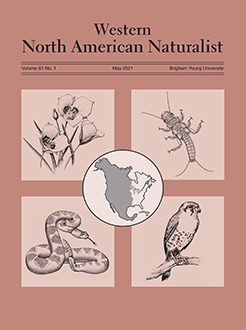Wildlife conservationists and managers often need to estimate abundance and demographic parameters to monitor the status of populations, and to ensure that these populations are meeting management goals. DNA capture-recapture surveys have become increasingly common in situations where physical surveys are consistently difficult or counts are small or variable. Desert mule deer (Odocoileus hemionus eremicus) inhabit rugged terrain, occur at low population densities, and demonstrate cryptic behaviors, making monitoring and assessing population status difficult. We assessed the effectiveness of a fecal DNA–based capture-recapture method for estimating abundance and survival of desert mule deer. We designed and implemented a fecal DNA sampling design focused at water sources during the dry season (June–July) of 2015–2017 in the Little Chuckwalla Mountains (study area ∼968 km2) located in the Sonoran Desert of southeastern California. We conducted 6, 5, and 4 surveys in 2015, 2016, and 2017, respectively. We used the capture-recapture data in the POPAN open-population model to estimate abundance and the Cormack–Jolly–Seber model to estimate annual survival. We detected 234, 193, and 211 unique individuals in 2015, 2016, and 2017, respectively. Over the 3-year study, population abundance estimates ranged from 386 in 2015 (95% CI, 264–509) to 301 in 2017 (95% CI, 260–342). Precision (i.e., coefficient of variation [CV]) of male and female abundance estimates ranged from 7% to 16%, and CV for males and females combined ranged from 5% to 15%. Annual apparent survival for females and males was 0.91 (95% CI, 0.59–0.98) and 0.71 (95% CI, 0.51–0.85), respectively. We concluded that fecal DNA–based capture-recapture is an effective method for estimating abundance and survival of desert mule deer. This approach could be expanded to encompass additional areas adjacent to our study site, with the potential to monitor the larger metapopulation of desert mule deer in the Sonoran Desert of California. More generally, DNA mark-recapture may be widely applicable to other species that congregate around water sources (or any required resource) during part of the year. Results from this study will be useful for developing population monitoring plans and for studies evaluating the effects of human development or environmental factors on desert mule deer and other desert ungulates.
How to translate text using browser tools
13 May 2021
Estimating Abundance of Desert Mule Deer Using Fecal DNA–Based Capture-Recapture
Stephen S. Pfeiler,
Mary M. Conner,
Jane S. McKeever,
Rachel S. Crowhurst,
Clinton W. Epps,
Gerald P. Mulcahy,
Erin P. Meredith,
Thomas R. Stephenson
ACCESS THE FULL ARTICLE

Western North American Naturalist
Vol. 81 • No. 1
May 2021
Vol. 81 • No. 1
May 2021




